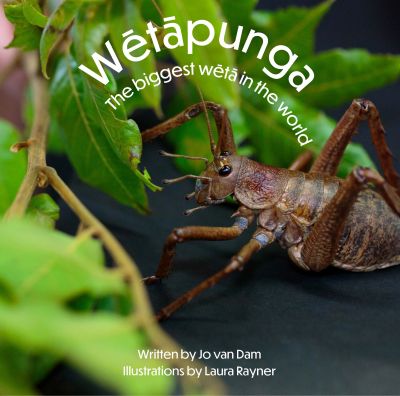Aotearoa New Zealand has many beautiful native birds, a real life dinosaur (tuatara) and other wonderful creatures.
Did you know we also have the Wētāpunga – the biggest wētā of all and a resident of Aotearoa for over 80 million years!
Wētā look a bit freaky with their spiky legs and long swaying feelers. They are a very large insect (as heavy as a sparrow), but they are quite harmless. They mostly eat leaves (their favourites are native to NZ) and they prefer to hide than jump out and scare you.
So much so they only come out at night. Generations ago, this kept them safe, but many years passing and people bringing rats from Polynesia, stoats and weasels, rabbits and hedgehogs from other places, this amazing insect has been endangered for a long time.
Luckily now there is a special part of the Auckland Zoo that is helping them breed, before they are placed on predator free islands to thrive as they should.
Wētāpunga – The biggest wētā in the world is a book for everyone to learn about this amazing creature, hopefully soothing fears of this giant insect, and also full of tons of fascinating facts.
From where and how long they live, how many times they shed their skin (and eat it!), to how big their poo is, this glossy picture book chocka with full-page photography, is the perfect way to learn about them.
There is a search and find concept within the pages, and a handy glossary of terms to reinforce what’s explained in the book. Cute sketches of children are sprinkled throughout the book, learning as the reader does.
I never knew where their ears were, or how they smell and taste their world. I never knew so many introduced animals (including cats), eat wētā. But I do know now, that the next time someone has one in a presentation, or in the bush – I won’t just run in the other direction!
Author – Jo van Dam
Illustrator – Laura Rayner
Picture Book
Non-Fiction
(2025, Bateman Books, Non Fiction, Aotearoa, New Zealand, NZ, Insect, Arthropod, Endemic, Predators, Exoskeleton, Taonga, Te Hauturu-o-Toi, Little Barrier, Protected)
